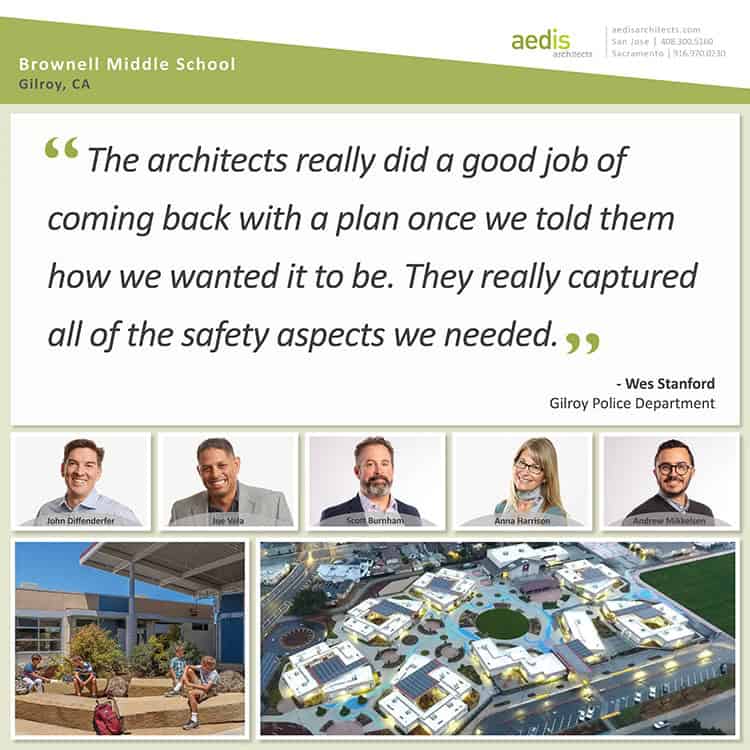Brownell Middle School & Campus Safety

The layout of a school campus, plus the design of its buildings and grounds can contribute to the safety of a school. The recommendations outlined within the Crime Prevention Through Environmental Design (CPTED) guide take several factors into account in a safe school, and it turns out that a school does not have to look or feel like a prison to be safe. Quite the opposite. Many of the best practices in designing a safe school can and will also contribute to its effectiveness as a learning environment. CPTED recommendations start with community engagement to aid in education and widespread buy-in on a proposed design. The design begins with the idea of a “defensible space” and the deterrence of potential offenders before committing criminal acts. The following represent just some of the factors that an architect must consider in creating a safe school:
- Approach and entry configuration
- Appropriate site location
- Landscaping
- Supervision, views, cameras
- Fences, gates, locks, keys, alarms
- Windows: location, and type
Other strategies that affect the behaviors of potential offenders include the overall appearance and condition of a school site. A school that appears run-down and vulnerable will invite more vandalism and an assortment of crimes. Also, an active school site with non-school-related functions occurring on-site increases the potential of crime detection and will act as a deterrent. CPTED strategies are most successful when the design process includes the combined efforts of the architect team, owners/operators, community participants, and law enforcement professionals.
